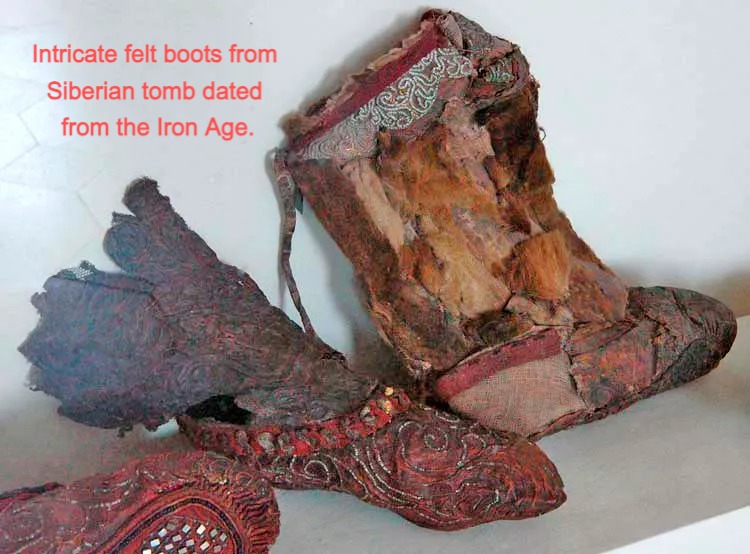Did you know that felt predates knitting and weaving? Felt saddle cloths, footwear and headdresses have been found in tombs in the Altai Mountains in Siberia. They are over 2000 years old! The oldest examples of felt have been wall hangings from Turkey that are 6500 years old!
Felting is a non-woven textile. To make felt, you take sheep wool or alpaca fibre (technically only the fibre from a sheep can be called wool), and comb it until it is nice and fluffy and straight. The fibres are then drafted (pulled off) and laid out in the same direction. This process is repeated, but the fibres are laid out at 90 degrees to the first or previous layer. A garment or pair of slippers contains many layers of fibre.
Next water is applied to the fibres and some natural soap. This opens up the scales on the fibres ( think of them like little hooks). The fibre layers are then rubbed and rolled, which meshes all the fibres together to form a permanent bond. This is such a magical thing to feel and see.
The process I have described above is wet felting. There are other ways of making felt for example: needle felting (machine and hand done) and using industrial steam presses, none of which I use to make my products. l do it the ancient, traditional way.
Felt, being a natural fibre, feels great against your skin. It breathes, so you don't get too hot or sweaty. Alpaca fibre is hollow, making it much lighter than sheep wool and warmer, too. Another advantage is that alpaca fibre contains no lanolin - which is great for those who have wool allergies.
I am hopelessly addicted to wet felting. There is always something new to learn and after making hundreds of pairs of slippers, it still feels like magic. So now I hope that you know what felt is and why you should wear it.







Comments